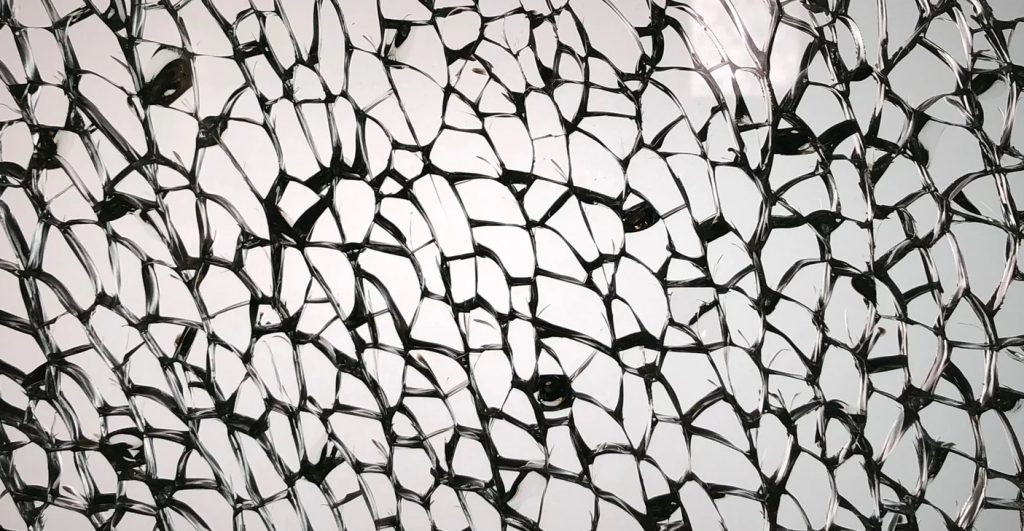Seeing or hearing a window break unexpectedly in a high-rise apartment can be startling. While rare, these breaks are usually caused by a natural material phenomenon called a nickel sulfide (NiS) inclusion. We’ve experienced a couple of these breaks at Paseo and understand that, while uncommon, it’s a possibility that it could happen again.
At Paseo, resident security is our top priority. This article explains what NiS inclusions are, why they sometimes cause tempered glass to break and what Paseo residents should expect from our response and cleanup process.
What Are Nickel Sulfide Inclusions and Why Do They Cause Breakage?

A nickel sulfide inclusion is a microscopic metal crystal that can accidentally form inside glass during manufacturing. It occurs when trace amounts of nickel react with sulfur and solidify during the heating and cooling process that gives tempered glass its strength.
These inclusions are invisible to the naked eye and typically cause no immediate harm. However, as Giroux Glass explains, these crystals can slowly change shape over time. This change increases internal tension within the glass. Eventually, that tension may become too much and the pane can fracture spontaneously, even years after installation.
According to Vitro Architectural Glass, these inclusions are naturally occurring and not a result of faulty installation or construction. Most breaks happen on interior-facing windows, which face more temperature variation from heating, ventilation, air conditioning (HVAC) systems and sun exposure. When breakage occurs, tempered glass is engineered to shatter into small, granular pieces rather than dangerous shards.
In regions like Austin, where daytime heat and nighttime cooling create frequent thermal cycling, these conditions can accelerate stress buildup in tempered glass that contains one of these inclusions.
In short: Nickel sulfide inclusions expand slowly over time, increasing stress inside the glass until a spontaneous break occurs, especially in high-rise environments with temperature shifts.
Why High-Rises Use Tempered Glass Despite the Risk
Tempered glass is the best choice for high-rise construction because it is:
- 4–5 times stronger than standard glass
- Resistant to wind pressure, thermal load and impact
- Designed to fracture securely if breakage occurs
All units at Paseo are fitted with laminated tempered glass, which includes a plastic interlayer that holds glass fragments together after breakage. This prevents glass from scattering across the room and helps maintain security.
What It Looks Like When Tempered Glass Breaks
If tempered glass does break, it shatters into small, blunt fragments that reduce the risk of injury or surface damage. You may hear a loud pop or crack, but the aftermath is less dangerous than traditional glass.
Because laminated tempered glass holds fragments in place, you’re unlikely to see glass scattered across the room. Instead, the pane may appear fractured but still mostly intact until replaced.
What to Do If a Window Breaks in Your Apartment
If a window in your apartment ever breaks unexpectedly:
- Step away from the area immediately.
- Do not attempt to clean up the glass.
- Call the Paseo office immediately so our team can secure the area and begin cleanup.
How Paseo Handles Window Breaks
When a nickel sulfide inclusion causes a break, our team responds quickly and follows a clear, efficient process:
- Secure the space to ensure resident safety.
- Clean and remove all glass fragments.
- Order and install a replacement pane of tempered glass.
In rare cases, such as a poolside or exterior-facing window, we may need to temporarily drain the pool to ensure safe access and installation. However, most NiS-related breaks occur indoors.
After the window is replaced, you may notice a slight temporary smell in the room. This is normal and usually fades within a day or two. It comes from the plastic interlayer in laminated glass or materials used during removal. Running your HVAC or opening a window can help the odor clear more quickly.
Final Thoughts for Paseo Residents
Nickel sulfide inclusions are a naturally occurring imperfection—not a sign of poor materials or construction. While they can’t be predicted or prevented, they’re rare and well understood.
If a window ever breaks in your home, know that the Paseo team is ready to respond quickly and professionally. Our goal is to maintain a secure and comfortable environment for all residents, even when the unexpected happens.
If you notice any cracks, unusual sounds or have concerns about your windows, please call the Paseo management team immediately.

Nirosha Perera
Nirosha is the general manager at Paseo, with eight years of experience in property management. She spent 24 years living in Dubai before moving to the U.S. When she’s not at work, you’ll find her kicking off the day at the gym, exploring new restaurants, or playing fetch with her cat, Shadow.
October 31, 2025
